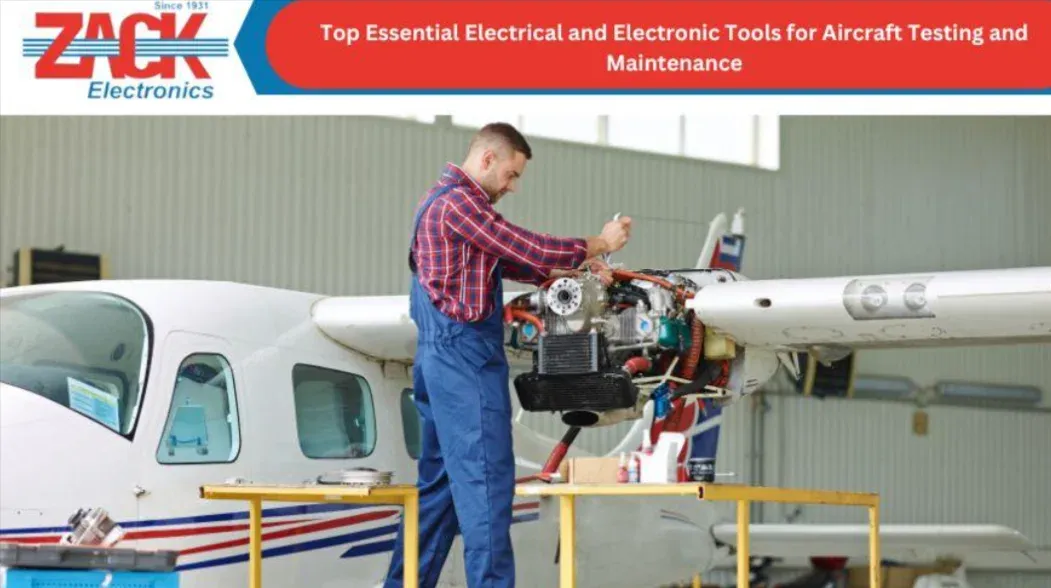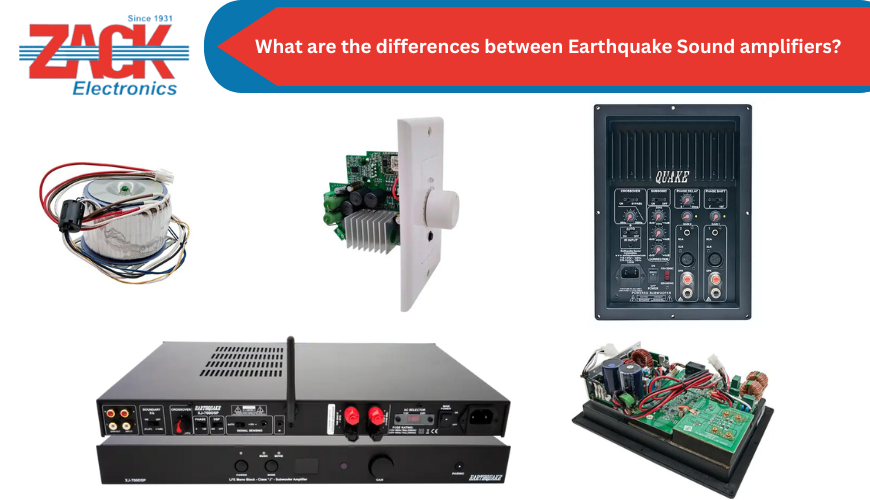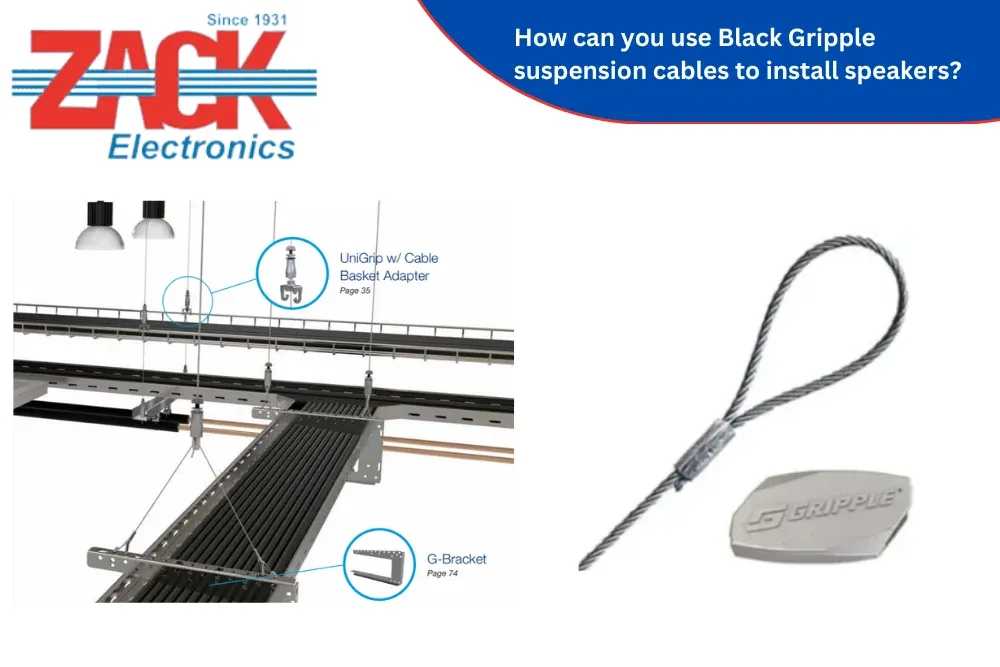Top 8 Essential Electrical and Electronic Tools for Aircraft Testing and Maintenance

Aircraft maintenance is of utmost priority to ensure the passenger and crew's safety. Specialized engineers and technicians pay a lot of attention to maximizing the aircraft's value and preventing any losses due to downtime. Some activities include inspecting, testing, dismantling, repairing, and reassembling aircraft engines, checking electrical circuits, and testing aircraft communication equipment. To fly safely and optimally flying and landing back, engineers must run several checks using special tools.
Avionics maintenance is broadly classified into regular or line care, heavy maintenance, and individual component maintenance. The most performed maintenance is a line that covers daily checks of fluids, pre-flight checks, scheduled minor repairs and modifications, and identifying any troubles. Heavier maintenance is conducted less often and requires a large facility, while the maintenance of individual aircraft test equipment components is rare and needs specialized services for complete repairs.
By running meticulous checks for safety, performance, and other parameters, aircraft owners are assured of the reliability of the aircraft. Here's why aircraft testing and maintenance are of foremost focus.
Safety of the aircraft and people on board: All people onboard an airplane can fly and land safely if the checks for safety and performance are given the go-ahead. Regular testing and maintenance procedures help identify and fix issues early before taking off.
Compliance: Regulatory bodies like the Federal Aviation Administration (FAA) establish stringent measures for ensuring aircraft, crew, and passenger safety. Aircraft testing and maintenance must adhere to all government safety and inspection measures to operate legally and win passengers' continued trust.
Optimal performance: For all aircraft mechanisms to work as expected, they must undergo checks periodically, both before and after the flight. It helps to highlight any minor or significant fixes before the next trip. Preventive checks often help save on costs rather than taking corrective actions.
Importance of electrical and electronic tools in aviation maintenance
Tools are essential to keep the aircraft running in the best condition and prevent safety issues. Tools empower maintenance personnel to ensure the aircraft's safety, reliability, and performance. Here are more compelling reasons why tools are essential to aviation:
Precision: An aircraft needs several gauges and instruments for several calculations to steer along the set path or change the course in case of incidents or emergencies. Regular maintenance of these instruments and gauges using electrical and electronic tools keeps their precision and accuracy in check.
Verifying integrity: Tools help to prevent electric fires and other incidents by checking the full functioning of all equipment. This ensures the durability and longevity of the aircraft components and other related parts.
Analytical data: Specialized equipment for analyzing complex waveforms and aircraft electrical test equipment, allowing professionals to diagnose potential problems before they arise.
Documentation: Electrical and electronic tools help trace any faults occurring after accidents. This documented information is useful to prepare study material to prevent future accidents.
Essential electrical and electronic tools for aircraft testing and maintenance
All services require expertise and electrical and electronic tools for regular upkeep and emergencies. Let's discuss some useful tools needed in aircraft testing and maintenance.
Avionic Service Case:
Please see Silvertonic products for additional aerospace testing equipment:
This product is designed to meet the requirements of avionics testing scenarios, such as "AOG" aircraft on the ground, as well as various MRO services.
Some of the specific uses of the Aero Service Kit include:
- Testing and troubleshooting electrical connections
- Measurement of voltages, currents, and resistances
- Conducting a continuity check on circuits
- Repairing faulty components and identifying their causes
- Maintenance of avionics systems on a regular basis
Multimeter:
A multimeter is valuable to ensure accurate measurements of continuity, current, voltage, and resistance of electrical systems. Fluctuating voltages are not a good sign for the stability of electric systems and can signal abnormal power consumption. With a multimeter, you can ensure that power sources are within their specified parameters. You can also check precise tolerances, and continuity checks ensure the safety of aviation electric safety.
Wire Tracer and Toner:
In aircraft electrical systems, locating individual wire paths can be equivalent to finding your way out of a maze. Among the network of connectors and cables, a wire tracer and toner help to locate and trace wires. For periodic inspection of wires' health and checking for wear and tear, an electromagnetic or radio frequency signal goes through the insulation traveling through the wire and indicates the signal's path on a receiver. The tracer allows the identification of any loose or damaged connections. They provide an additional safety layer for the critical systems.
Oscilloscope: An oscilloscope is an aircraft electronic test equipment that visually displays any problems with electrical systems by analyzing electrical waveforms. They plot voltages against time on a graph to determine if a malfunctioning instrument distorts a critical signal. Early identification of any discrepancies allows one to fix them before it becomes a problem. Oscilloscopes can visualize non-electrical signals like sound and voltage, too.
Vibration Meter: A vibration meter helps assess critical components like engines and bearings for their appropriate range of vibrations. Any irregularities are signs of imbalance, misalignment, or overuse. Vibration meters help prevent expensive fixes. Some meters allow continuous monitoring to create historical records to inform it is time for regular maintenance.
Circuit Breaker Finder:
This tool saves time by streamlining the electrical maintenance process by identifying specific circuit breakers within electrical panels. The main role of the circuit breaker finder is to eliminate guesswork by pinpointing specific circuit breakers within electrical panels. A must for safety in electric work, the tool ensures disconnected circuits for repairs or maintenance.
Safety Wire Pliers:
Coated with insulated material, pliers are an all-purpose and safe tool in aviation electric testing and maintenance for handling live wires and circuits and preventing electrical shocks. A handle tool and safety wire pliers allow easy wire cutting, stripping, and fastener handling. With jagged jaws, pliers enhance control and prevent slipping.
Punches:
The primary use of punches in aviation is to create holes in aircraft components for rivet installation. Precise hole drilling helps maintain aerodynamics and structural stability. By safely assisting in panels and fastener removal, punches are instrumental in preventing damage.
Takeaway
As aircrafts get faster, lighter, bigger, and more advanced, their maintenance gets more complex. It is essential to adhere to all regulatory compliance norms and keep the flying machines in the best shape for safety, performance, and durability. By utilizing the above electric and electronic tools in regular aircraft testing and maintenance, you're assured of a good return on investment and prevent accidents.


















